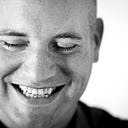2.12 Burroughs Time-Lapse
Process of Observation
In my interview with Daniel Paluska, he said, “…time-lapse makes me think about the pace of life and how I interact with the machinery around me: the ticking of the clock, the nine to five bells, are all external times. The time-lapse camera is a timer that is taking a picture every thirty-seconds. How does that relate to my internal state and experience in the world? I think that’s something that really seems tied to a process of observation…” I have been capturing my own time-lapse footage every day over a six-month period, searching for this process of observation. As Paluska asserts, “…time-lapse allows us to experience self and remember self.” Burroughs Time-Lapse showcases the first month of my time-lapse capture in chronological order as a constant element. Using a cut-up technique of editing split screens and juxtapositions, allows me to craft a unique relationship to create an open narrative. The cut-up technique is an aleatory technique in which a text, image or film is cut up and rearranged to create new content. Most commonly, cut-ups are used to offer a non-linear alternative to traditional reading and writing. The concept can be traced to the Dadaists of the 1920s, but was popularized in the late 1950s and early 1960s by writer William S. Burroughs, and has since been used in a wide variety of contexts. Burroughs describes the process of Cut-ups as “…establishing new connections between images, and one’s range of vision consequently expands.”
Originally published at http://jamesjgrady.com on June 11, 2012.
